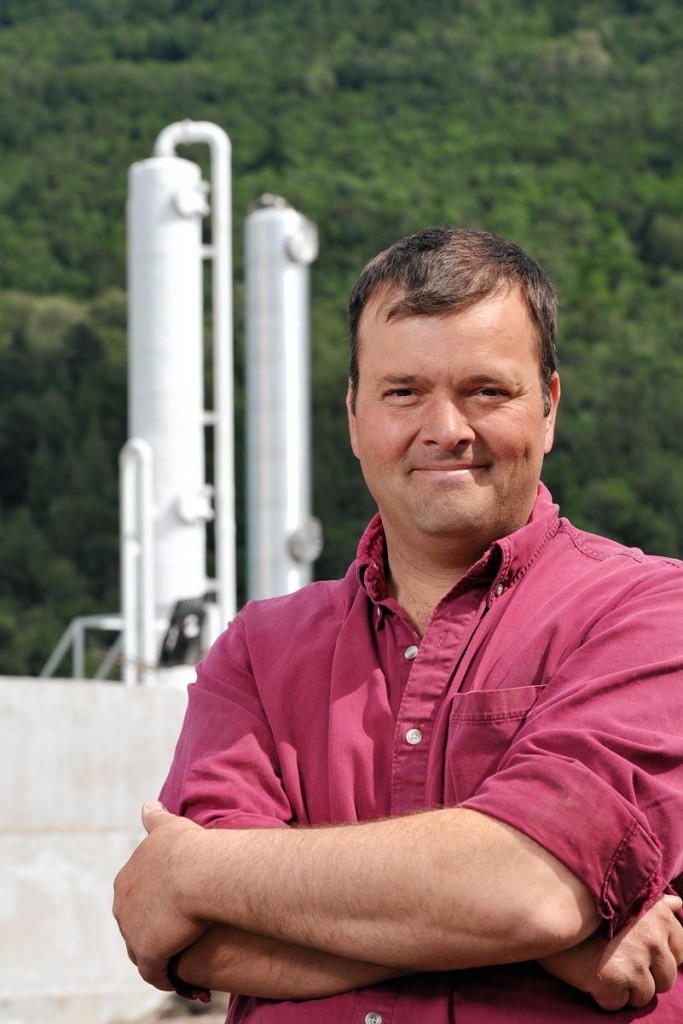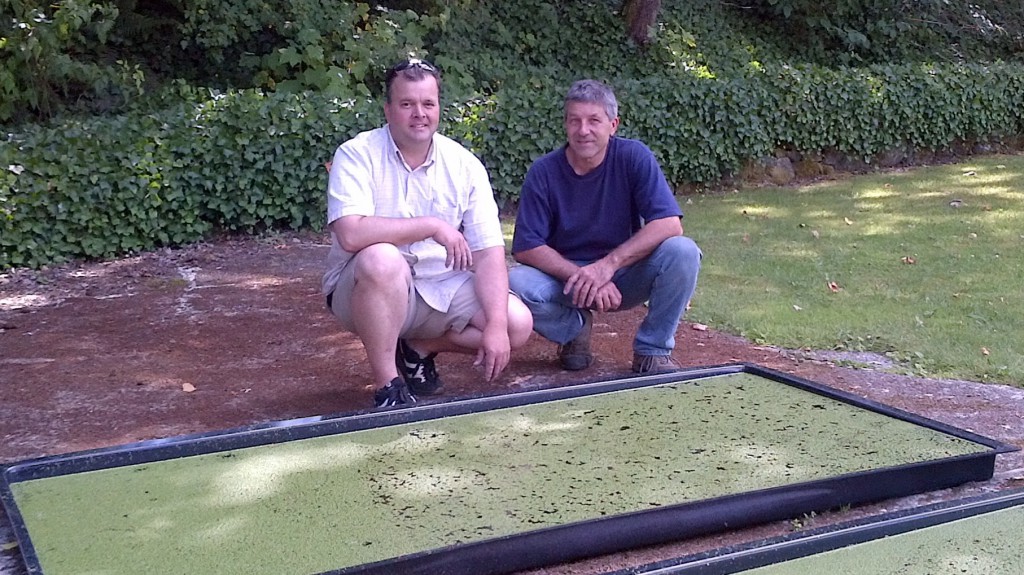By Cate Pedersen
Is zero-waste agriculture possible in our lifetime? Will people reading this article one day see British Columbian farmers held up as a perfect example of how to efficiently and economically eliminate the byproducts of their sector without burying or burning?
“We have the technology to have zero-waste agriculture—it’s not semantics, it’s a real goal.”

Christopher Bush, President and CEO of Catalyst Agri-innovations Society will tell readers he believes this is BC’s moonshot moment. It’s definitely time to reimagine how the province manages the waste from its most valuable sectors.
“We have to look at our resources differently,” Bush explains. “We have been blessed with abundance, but we have responded by being wasteful.”
Bush chose to work within agriculture as “food is the common denominator of life”, sharing technologies and innovations that will enhance the province and its citizens.
It was Bush’s vision 10 years ago, to have a single complex, a place for agvocates and ag-food industries with technological solutions to drive resource efficiency—with focus on how to eliminate waste and wastefulness in agriculture.
He is the enthusiasm behind the Agricultural Centre of Excellence in Sustainability (ACES), an Abbotsford-based organization “addressing the future of food through systemic solutions”—a hub around which a wheel of industry can be built. He now seeks provincial funding in an amount similar to what other provinces have made available for ag-tech projects.
It seems only logical that since agriculture has an economic effect of almost two billion dollars for Abbotsford and is known as the agriculture capital of Canada, such forward-thinking ventures are the place to invest and encourage growth.
“All the things I predicted 10 years ago are now coming to the light,” Bush affirms, excited to share his ideas for a center that will guide the future of sustainable agriculture, which he feels is desperately needed right now.
Bush envisions a synergetic roundtable of scientists, agriculturalists, economists and engineers focused on common waste elimination goals and he is eager to see the BC government drive agriculture innovation and clean up the environment, providing more opportunities for growth in the technological sector.
“We have the natural capital—we need to create opportunities. Rather than fund individual projects, let’s put everyone under one roof so we leverage that synergy and get exponential returns,” he says. “We will help startups and people with ideas take it to market in a bundled solution.”
“Absolute transparency will be mandatory in this centre on a wide open stage for the world to see,” says Bush. “We have taken everything in our model and planning from someone else who’s done it very, very well.”
Bush and his collaborators have modeled the innovation centre after organizations like JTI (Swedish Institute of Agricultural and Environmental Engineering), India’s Praj Matrix the Innovation Centre, and Ontario’s Vineland Research and Innovation Centre.
“We have a one reason rule: we are not allowed to do anything for one reason,” Bush describes. Earlier in 2016, he attended the Global Grand Challenge Awards, presented by Singularity University in San Francisco, as one of the top 48 finalists from around the world. During the event, Bush reached out to a group at Stanford University working on waste water, which discovered a microbe that eats methane and excretes a bio-plastic. They worked to find a place in the plastic world for this new discovery and found that when shrimp were fed the plastic, they gained weight faster and exhibited an improved immune system. Collaborations and discoveries like these motivate Bush and keep his dream alive.
When Bush started out with his original company, Catalyst Power, he built the first anaerobic digester in BC, and in the same project, the very first gas-to-pipeline in North America occurred.
“Ten years later, everyone is looking at gas to pipeline because of the cost of electricity.” Bush remarks. “We have a great relationship with Fortis—Fortis is still the only company in North America involved in creating opportunities to utilize renewable natural gas,” he adds.

Another of Bush’s projects involved growing duckweed in the effluent water from a land-based fish farm. This tiny aquatic grass cleans the water, eats CO2, and can be fed to fish, sows, and even people. Now these technologies can be combined and expanded on to create the cycle of manure to digester to fertilizer to duckweek pond to water reclamation and to food for the cows, starting the cycle again.
“We have the technology to have zero-waste agriculture—it’s not semantics, it’s a real goal,” Bush stresses, as he goes on to describe how he managed to secure a three million dollar anaerobic digester, plant, and research lab at Seabreeze Farms in Delta, launching it as the Symbiosis Centre for Zero Waste Agriculture.
Currently, Seabreeze is operating the second largest on-farm digester in British Columbia, selling gas to Fortis, and was the first farm in Canada to put a full nutrient extraction system on the digester.
video: Seabreeze Farm – Renewable Natural Gas FortisBC – Natural Gas & Electric Utility Company
“We are moving the duckweed chamber over to Seabreeze now so there is going to be a huge amount of technology around an active on-farm digester. In February, Seabreeze is going to do cogeneration as well, so the facility will be able to duplicate any scenario that exists in North America.”
“We can get the water clean enough to provide drinking water. Waste is loss of money, and creates pollution,” says Bush.
Anywhere energy is leaching out, Bush’s goal is to capture it and create a resource. “We can produce energy, food and water, and alleviate environmental impact.”
Bush admits his vision might be taking longer to realize than he anticipated, but he will keep on working with others with equal passion to keep BC bountiful and beautiful.
If you are interested in learning more about Christopher Bush, ACES, or zero-waste agriculture, you can visit the website: www.aces-bc.ca












